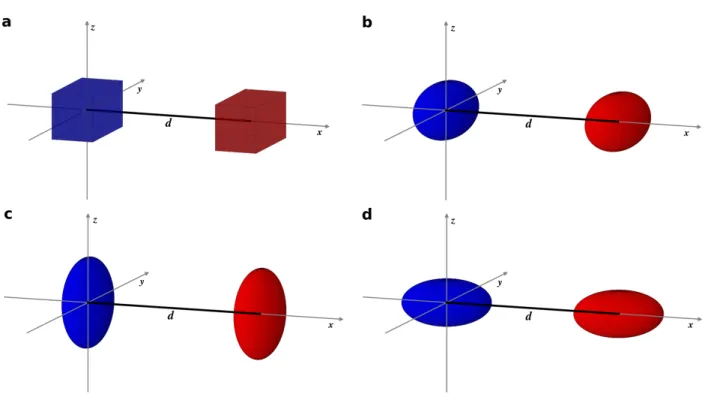Physik auf dem Computer SS 2017
Worksheet 10:
Multidimensional Monte Carlo Integration
July 4, 2017
General Remarks
• The deadline for handing in the worksheets is Monday, July 10th, 2017, 12:00 noon.
• For this worksheet, you can achieve a maximum of 10 points.
• To hand in your solutions, send an email to your tutor:
– Johannes Zeman zeman@icp.uni-stuttgart.de (Tue 15:45–17:15) – Michael Kuron mkuron@icp.uni-stuttgart.de (Wed 15:45–17:15) – Johannes Zeman zeman@icp.uni-stuttgart.de (Wed 15:45–17:15)
(This worksheet only!)
– Johannes Zeman zeman@icp.uni-stuttgart.de (Thu 14:00–15:30)
• Please try to only hand in a single file that contains your program code for all tasks. If you are asked to answer questions, you should do so in a comment in your code file. If you are asked for graphs or figures, it is sufficient if your code generates them. You may as well hand in a separate PDF document with all your answers, graphs and equations.
• The worksheets are to be solved in groups of two or three people.
Task 10.1: Electrostatic Potential between Homogeneously Charged Objects (10 points)
• 10.1.1 (1 point) Imagine two solid, oppositely and homogeneously charged prolate (i.e., elon- gated) ellipsoids with no external forces other than friction acting on them. Due to their opposite charges, they will attract each other. If we assume that the two bodies cannot ex- change charge, how will they eventually align (tip-to-tip, side-by-side, etc.)? Give reasons for your answer.
In Gaussian units (ε = 1), the electrostatic interaction energy of two homogeneously charged bodies with volumes V 1 and V 2 , and total charge +1 and −1, respectively, is given as
E = − Z
V
2Z
V
11
|~ r 1 − ~ r 2 | d~ r 1 ~ r 2 (1) In the remainder of this task, you will estimate this distance-dependent interaction energy between different oppositely, homogeneously charged objects by means of Monte Carlo integration.
• 10.1.2 (1 point) Implement a Python function cuboid(n, dimensions) which returns an n × 3 array containing n random points that are uniformly distributed within a cuboid (German:
“Quader”) with edge lengths 2R x , 2R y , 2R z and its center at the origin. The parameter dimensions is assumed to be a NumPy array containing the values of R x , R y , and R z .
1
Hint Uniformly distributed random numbers can be generated with the command numpy.random.uniform() . Read the corresponding Numpy documentation before use!
• 10.1.3 (2 points) Implement a Python function ellipsoid(n, dimensions) which returns an n × 3 array containing n random points that are uniformly distributed within an ellipsoid with principal half-axes of length R x , R y , R z and its center at the origin. The parameter dimensions is assumed to be a NumPy array containing the values of R x , R y , and R z .
Hints
– The surface of an origin-centered ellipsoid with principal half-axes of length R x , R y , R z is the set of all points ~ r :=
r x r y r z
for which R r
xx
2
+ R r
yy
2
+ R r
zz
